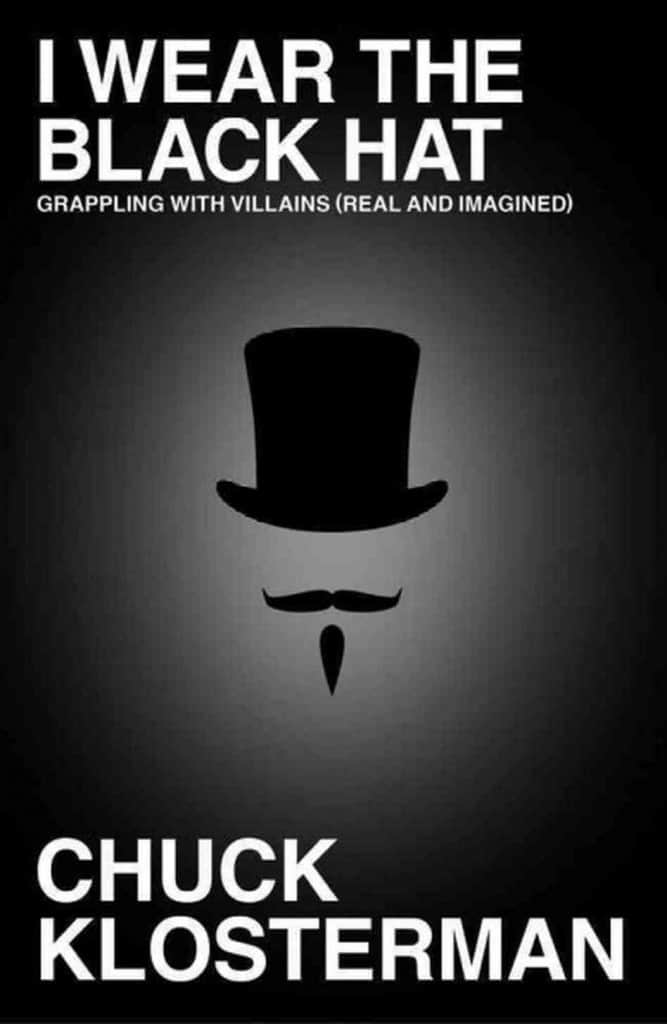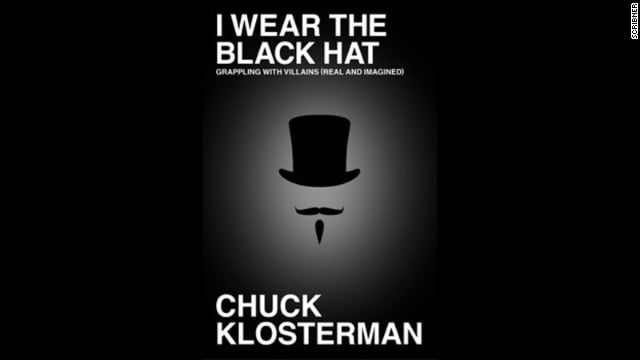The recent movie Wreck-It Ralph tells the story of Ralph, the 8-bit villain in a Donkey Kong-inspired, classic 1980s-style video game. As the tension rises in the movie we viewers are treated to a group therapy session circle, around which sit the bad guys from all of the other games in the arcade. Ralph, whose sole job is to smash an apartment building to smithereens and later be hurled off the top of that same building in defeat, has just said how much he longs to be something more, something different. Just once, Ralph explains, he would like to be good. In response, a villain named Zangief shares some (heavily-accented) words of wisdom with Ralph:
“You are bad guy, but that does not mean you are bad guy,” says Zangief.
It’s a wonderful line, not only because it’s a clever play-on-words, but because it sums up an important theme of the movie, namely, that there is often a gap, for better or worse, between the roles we play in life and our true character. Just like in our non-animated world, the computer-animated universe of Wreck-It Ralph features heroes that are often deeply flawed, and villains who may not always be truly evil. The movie suggests that negotiating this difference between role and reality – persona and true self – is a fundamental feature of what it means to be a mature human being. Of course, this insight is neither groundbreaking nor especially insightful, but hey, it’s done well (and at this particularly shallow moment in pop culture history, it seems positively Shakespearean in depth).
***
The pop culture critic/savant Chuck Klosterman’s newest book, I Wear the Black Hat: Grappling with Villains (Real and Imagined), covers some of the same thematic ground. In it Klosterman muses on the role of villains, ranging from the Oakland Raiders to O.J. Simpson, to (even) Adolph Hitler, in American popular culture and history. Much like Wreck it Ralph, Klosterman is at least partially preoccupied by questions of perception and reality, as well as what our choice of villains says about us, both as individuals and as a society.
I say “partially” because Klosterman has many preoccupations in this entertaining, scattershot, and ultimately somewhat disappointing, volume of essays (“riffs” might actually be the better word), that blends his enormous knowledge of popular culture with his more recent foray into pop-morality as the ethics columnist for the New York Times. Like any good essayist, Klosterman is better at proposing questions than answering them, and he injects a healthy skepticism into the task of separating the good guys from the bad guys in our media-driven culture. When Klosterman sticks to pop culture and politics, his insights can be dazzling and funny (he has a great line involving Rick Perry, the death penalty, and Diet Dr. Pepper that I won’t spoil for you), but when he swims into the deeper waters of real history, with its tragedies and genuine evils, he finds himself out of his depth. There are, of course, real issues to wrestle with here, but Chuck Klosterman is simply not the one to do it (but that’s more-or-less OK).
Along the way, however, Klosterman provides plenty of material to chew on, some of it fairly substantive. Does Joe Paterno’s dying in disgrace make him a villain, despite the decades he spent as a football coaching hero at Penn State? What if O.J. Simpson really didn’t do it? Why on earth was Bill Clinton not the villain in the Monica Lewinsky scandal? And, in the best part of the book, what if Batman, a comic book hero, was a real person, roaming the streets of Manhattan in search of would-be criminals? Would we still deem him heroic, or would he, like the 1980s New York City subway vigilante Bernhard Goetz, ultimately be deemed a violent crackpot? In almost all of these cases, Klosterman concludes that, in order to truly play the role of a villain, a person must be perceived to “know the most, but care the least.” By this calculus, Joe Paterno is a villain, because he knew of Jerry Sandusky’s pattern of child abuse and was by far the most powerful person at Penn State, but did little to bring his assistant coach to justice. But Klosterman is also careful to note that being a villain is not a final indictment on one’s character, because there are things that we, as mere human observers, can never know about a person. I think Jesus of Nazareth may have beaten Klosterman to this insight, but I suppose it bears repeating.
***
 Klosterman is far more enlightening, however, when he’s discussing his true love, rock music. It’s this that was the subject of his first (and still best) book, Fargo Rock City (2001). I particularly enjoyed his obsessively detailed analysis of why, at various points in his life, he felt it absolutely necessary to hate certain bands, from the Eagles to Fine Young Cannibals (I suspect anyone under 35 will have to look up the latter, but trust me, Chuck is spot on). Like many members of his generation, Klosterman defined himself, especially when he was growing up, by the type of music he listened to, in his case that oft-derided genre, hair metal. But there is something about adolescence that requires that we not only like certain bands, but that we despise other kinds of bands that somehow, somewhat mysteriously, threaten our self-definition. The Eagles were one of those villainous bands for the young Chuck Klosterman, even though he can’t quite put his finger on why. It was these kinds of self-aware cultural insights that I found most resonant in when I read Fargo Rock City for the first time – probably because I recognized so much of myself in Klosterman’s story. In fact, I wish he would have said even more about what our musical heroes and villains say about who we are and how they shape our adolescent identities. I suspect that Klosterman has many more interesting things to say on this topic. But instead he decided to write about Hitler.
Klosterman is far more enlightening, however, when he’s discussing his true love, rock music. It’s this that was the subject of his first (and still best) book, Fargo Rock City (2001). I particularly enjoyed his obsessively detailed analysis of why, at various points in his life, he felt it absolutely necessary to hate certain bands, from the Eagles to Fine Young Cannibals (I suspect anyone under 35 will have to look up the latter, but trust me, Chuck is spot on). Like many members of his generation, Klosterman defined himself, especially when he was growing up, by the type of music he listened to, in his case that oft-derided genre, hair metal. But there is something about adolescence that requires that we not only like certain bands, but that we despise other kinds of bands that somehow, somewhat mysteriously, threaten our self-definition. The Eagles were one of those villainous bands for the young Chuck Klosterman, even though he can’t quite put his finger on why. It was these kinds of self-aware cultural insights that I found most resonant in when I read Fargo Rock City for the first time – probably because I recognized so much of myself in Klosterman’s story. In fact, I wish he would have said even more about what our musical heroes and villains say about who we are and how they shape our adolescent identities. I suspect that Klosterman has many more interesting things to say on this topic. But instead he decided to write about Hitler.
I should say, he sort of writes about Hitler. Apparently deciding that no serious book about villains can omit the biggest villain of them all (with Satan and Judas receding in importance in our more secular age), Klosterman basically writes about how he really, really, doesn’t want to write about Hitler and then proceeds to explain how Hitler doesn’t really conform to the Klosterman definition of a villain (apparently, Hitler cared too much, albeit about crazy, evil things). In other words, Klosterman fails utterly in the task he so unwisely set before him as a writer, and lets us survey the wreckage. Although the Hitler chapter doesn’t completely unravel I Wear the Black Hat, it comes awfully close. Actual history, full of mass murder, oppression, and injustice (as well as grace, hope, and redemption), simply will not conform to the storyteller’s conventions of heroes and villains, nor does it fit comfortably within Klosterman’s brand of hyper-aware, ironic cultural criticism.
It would be too easy, though, and unfair, simply to suggest that Klosterman is an unserious writer who should never attempt to write about serious things. After all, his analysis of the media storm around Joe Paterno, a real tragedy if there ever was one, is sophisticated and even-handed, as is his treatment of “Subway Vigilante” (and George Zimmerman precursor) Bernie Goetz. No, the problem lies elsewhere.
The subtitle of I Wear the Black Hat suggests that the author will be grappling with villains “real and imagined,” by which Klosterman seems to mean both fictional and historical characters. However, in a sense, all of the villains that Klosterman analyzes are fictional, by which I mean that he is mostly interested in how even real life people like Joe Paterno have been mediated and packaged for our consumption by the mass media. Our notions of the relative heroism and villainy of these media creations have only a passing relationship with the actual content of their characters, their virtues and vices. Rather, they are players in a grand, complicated, frustrating, and fascinating story that we call popular culture – the culture that Chuck Klosterman knows and loves so well. Even if he is not our best philosophical guide to the problem of evil in the world, he still succeeds in helping us get to know those many bad guys in pop culture who, as Zangief might say, are not necessarily bad guys.



